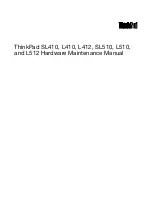
Crestron
e-Control
®
Software
Subnet Mask
- The method used for splitting IP networks into a series of subgroups, or
subnets. The mask is a binary pattern that is matched up with the IP address to turn part
of the host ID address field into a field for subnets.
Swapping
- Replacing one segment of a program in memory with another and
restoring it back to the original when required.
Switch
– 1. A data switch connects computing devices to host computers, allowing a
large number of devices to share a limited number of ports. 2. A device for making,
breaking, or changing the connections in an electrical circuit.
Server
- Any computer whose function in a network is to provide user access to files,
printing, communications, and other services.
Software
- Instructions for the computer. A series of instructions that performs a
particular task is called a “program.” The two major categories of software are
application software and system software. Application software is the program of
interest that enables users to complete specific tasks. System software includes
operating systems and any program that supports application software.
TCP
(
T
ransmission
C
ontrol
P
rotocol) - A method (protocol) used along with the
Internet Protocol (Internet Protocol) to send data in the form of message units between
computers over the Internet. While IP takes care of handling the actual delivery of the
data, TCP takes care of keeping track of the individual units of data (called packets)
that a message is divided into for efficient routing through the Internet.
TCP/IP
- Transmission Control Protocol/Internet Protocol (TCP/IP) is the basic
communication language or protocol of the Internet. It can also be used as a
communications protocol in a private network (either an intranet or an extranet). When
you are set up with direct access to the Internet, your computer is provided with a copy
of the TCP/IP program just as every other computer that you may send messages to or
get information from also has a copy of TCP/IP.
TFTP
(
T
rivial
F
ile
T
ransfer
P
rotocol) - A version of the TCP/IP FTP protocol that has
no directory or password capability.
Throughput
- The amount of data moved successfully from one place to another in a
given time period.
Topology
- A network’s topology is a logical characterization of how the devices on
the network are connected and the distances between them. The most common network
devices include hubs, switches, routers, and gateways. Most large networks contain
several levels of interconnection, the most important of which include edge
connections, backbone connections, and wide-area connections.
TX Rate
– Transmission Rate.
UDP
(
U
ser
D
atagram
P
rotocol) - A communications method (protocol) that offers a
limited amount of service when messages are exchanged between computers in a
network that uses the Internet Protocol (IP). UDP is an alternative to the Transmission
Control Protocol (TCP) and, together with IP, is sometimes referred to as UDP/IP. Like
the Transmission Control Protocol, UDP uses the Internet Protocol to actually get a
data unit (called a datagram) from one computer to another. Unlike TCP, however,
UDP does not provide the service of dividing a message into packets (datagrams) and
reassembling it at the other end. Specifically, UDP doesn't provide sequencing of the
packets that the data arrives in. This means that the application program that uses UDP
must be able to make sure that the entire message has arrived and is in the right order.
Reference Guide – DOC. 6052
Crestron e-Control®
•
53
















































